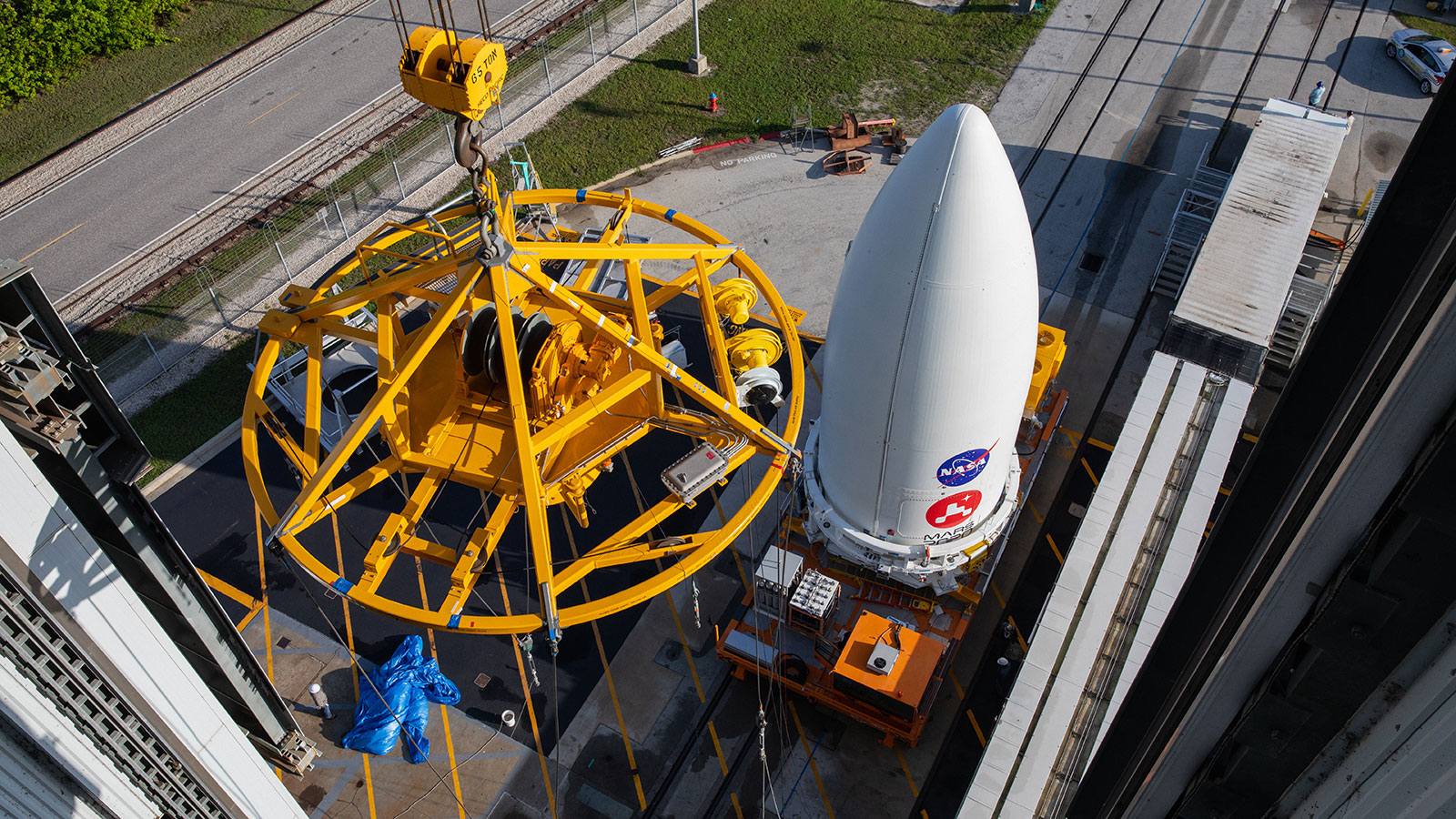
NASA's next Mars rover will take flight this week, if all goes according to plan.
The car-sized Perseverance rover, the centerpiece of NASA's $2.7 billion Mars 2020 mission, is scheduled to launch Thursday (July 30) during a two-hour window that opens at 7:50 a.m. EDT (1150 GMT). The spacecraft will lift off atop a United Launch Alliance Atlas V rocket from Cape Canaveral Air Force Station in Florida.
You can watch the spaceflight action live here at Space.com, courtesy of NASA. The space agency will also host a series of daily press conferences and briefings leading up to the launch. You can see that schedule here.
Related: How to watch NASA's Mars 2020 Perseverance rover launch online
Mission team members have some wiggle room if technical issues or bad weather scuttle the Thursday attempt. Mars 2020 can still make its way to the Red Planet as long as it launches by Aug. 15, NASA officials have said. After that, the mission would have to wait 26 months, until Mars and Earth are properly aligned again for interplanetary journeys.
Whenever it lifts off, Perseverance will touch down inside Mars' Jezero Crater on Feb. 18, 2021. The 28-mile-wide (45 kilometers) Jezero hosted a lake and a river delta in the ancient past, and Perseverance will characterize the area in detail and search for possible signs of ancient Mars life. The six-wheeled robot will also collect and cache several dozen samples that will be returned to Earth, possibly as early as 2031, by a joint NASA-European Space Agency campaign.
Mars 2020 will also test out several new exploration technologies. For example, one of Perseverance's 10 instruments, called MOXIE (short for "Mars Oxygen ISRU Experiment"), will generate oxygen from the thin, carbon dioxide-dominated Martian atmosphere. Such gear, if scaled up, could aid future human exploration of the Red Planet, NASA officials have said.
Related: NASA's Mars 2020 Perseverance rover mission in photos
Get the Space.com Newsletter
Breaking space news, the latest updates on rocket launches, skywatching events and more!
Mars 2020 also features a 4-lb. (1.8 kilograms) helicopter named Ingenuity, which will travel to the Red Planet on Perseverance's belly. Once the rover reaches a suitable spot on the Martian surface, Ingenuity will deploy and spin its blades, attempting to become the first rotorcraft ever to fly on a world beyond Earth.
Mars 2020 will be the third and final mission to launch toward the Red Planet during this year's window. The United Arab Emirates' Hope orbiter and China's ambitious Tianwen-1 mission launched on July 19 and July 23, respectively.
A fourth spacecraft, the European-Russian ExoMars rover Rosalind Franklin, was supposed to join the launch party this summer. But that mission suffered technical issues that could not be fixed in time and now must wait until 2022.
Mike Wall is the author of "Out There" (Grand Central Publishing, 2018; illustrated by Karl Tate), a book about the search for alien life. Follow him on Twitter @michaeldwall. Follow us on Twitter @Spacedotcom or Facebook.
Join our Space Forums to keep talking space on the latest missions, night sky and more! And if you have a news tip, correction or comment, let us know at: community@space.com.

Michael Wall is a Senior Space Writer with Space.com and joined the team in 2010. He primarily covers exoplanets, spaceflight and military space, but has been known to dabble in the space art beat. His book about the search for alien life, "Out There," was published on Nov. 13, 2018. Before becoming a science writer, Michael worked as a herpetologist and wildlife biologist. He has a Ph.D. in evolutionary biology from the University of Sydney, Australia, a bachelor's degree from the University of Arizona, and a graduate certificate in science writing from the University of California, Santa Cruz. To find out what his latest project is, you can follow Michael on Twitter.









